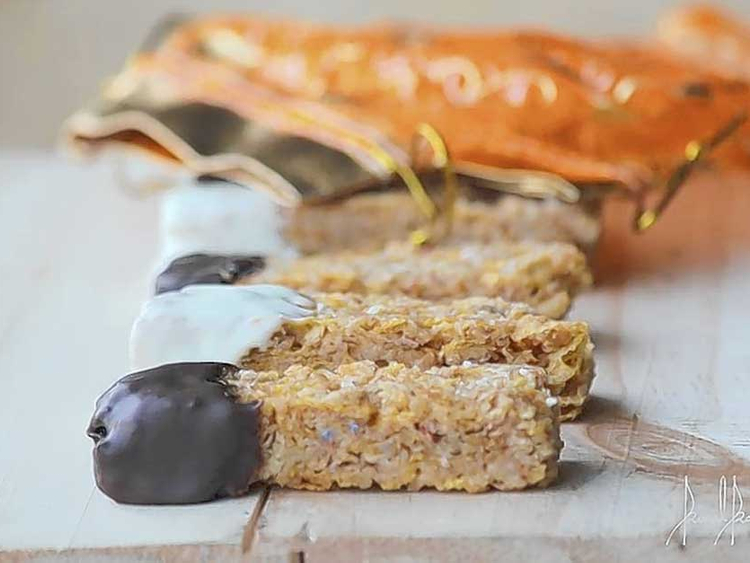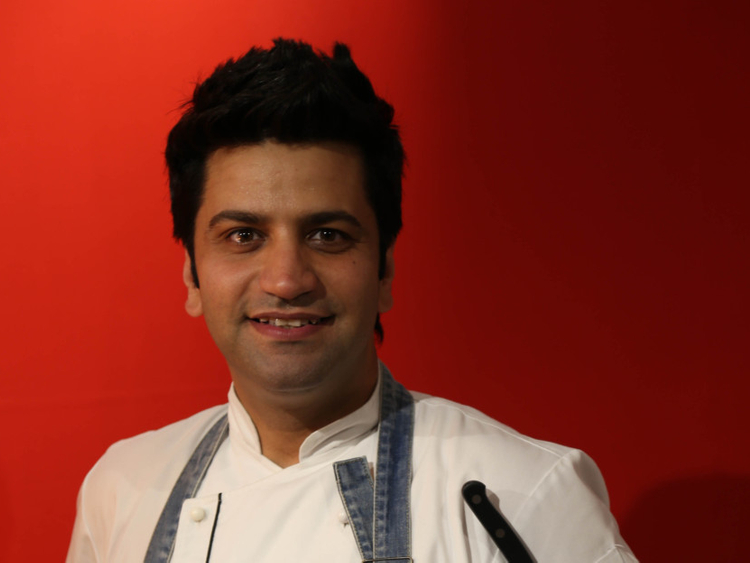As a child, I spent each Diwali in small town India. Rajkot was where my family returned each winter to unwind and recharge, and as we started packing weeks ahead, I’d count down the days looking forward to spending the Hindu festival of lights in the western state of Gujarat for two different sensory experiences.
Fireworks of all shapes and sizes abounded in neighbourhood stores behind our house (this is a food column, but indulge my digressions). Laxmi bombs, paper-wrapped explosives as big as my finger were a classic delight, as were noiseless items such as sparklers, fountains and starry rockets. All would be sold in cardboard boxes with pretty pictures of heavenly goddesses or earthbound actresses on the cover, but many would no doubt be banned today on health and safety grounds — a reason why the second, similarly extensive experience has also largely fallen out of favour.
The unbelievable variety of mithai, or sweets, that were forced on us as we went house to house guaranteed a week of syrupy contentment — and a lifelong battle with binge-eating. The women of each family spent days slaving over the stove turning out a range of delightful little confections that exploded on the tongue. From the ubiquitous karanji or ghugra, a sort of sweet empanada, to sukhdi, a simple burfi of wheat flour and ghee, recipes were fiercely guarded and jealously coveted, and only very rarely shared in their entirety even among family members.
Some items were bought in. These were usually labour-intensive efforts, such as soan papdi, a dense, flaky cube layered with ghee, cardamom and sugar, or mohan thal, a fudge-like of dry fruits and milk that requires endless stirring. Or Janakpuri Bhagat pedas, tiny, semi-soft cakes made entirely from milk solids and only acceptable if purchased from Jai Siyaram. The shopkeepers, known as halwais, operated on wafer-thin margins, making each item in-house, stirring and layering and infusing these stop-top dainties over the course of a 16-hour day.
Over the years, many of these items have become harder to find, as iconic sweetmakers have shut shop with a new generation seeking easier jobs and imported pleasures, such as cookies and chocolate.
That’s one reason Kunal Kapur, the celebrity chef and sometime judge on MasterChef India, launched The Sweet BreakUp, a webseries focused on creating mithai.
“Halwai in India is unfortunately a dying art,” he tells Gulf News tabloid!. “You don’t see the new generation queuing up at mithai stores like we used to. They would rather pick chocolates or baked desserts.”
He launched the series last month, and has already travelled to Delhi, Mumbai and Bengaluru, where he explored sweets unique to those cities — sometimes giving them his own twist, but always turning out a healthier version.
“One of the biggest perks of shooting The Sweet BreakUp was exploring wonderful Indian cities, chatting with enthusiastic locals and gorging on delectable iconic desserts,” he says. “Every mithai was an experience in itself and even more exciting and a nerve wracking challenge to recreate.”
Accompanied by TV foodies Rocky Singh and Mayur Sharma, Kapur recreated Tewari Brothers’ famous gulab jamuns from Delhi’s Chandani Chowk, and in Kolkata, Balaram Mullick Sweets’ unparalleled Sandesh — which airs this week.
In Mumbai he took on the owners of the legendary Ladusamrat in the central Parel district, recreated modaks, a steamed riceflour dumpling with a sweet coconut filling that is made each year for Ganesh Chaturthi, the 10-day party celebrating the birthday of Ganesha, India’s revered elephant-headed god. Kapur’s contribution to the carousing? Chocolate. The video has racked up nearly a million views over the last month.
“The idea of The Sweet BreakUp is to induct our new generation in the glory of Indian mithais,” he says. As association with Sugarfree, the artificial sweetener, helped. Through it, he’s able to do away with 150 calories from sugar when recreating Bengaluru’s famous caramelised Dharwad pedas. (He updates the 175-year-old sweet, which won a geographical indicator label in 2013, with cream for a fusion tiramisu.)
Sugar has been getting bad press in recent years, having replaced fat as the dietary demon in numerous scientific recommendations. However, recent research has shown that sweeteners mimic the body’s response to sugar — but fewer calories can only aid in the fight against obesity. That’s the theory anyway.
So while my childhood self might thrill to the idea of a tiramisu peda, he might be enamoured of the Punjabi chef’s grandma-style prescription for dietary curbs: “The key to controlling festive indulgence is portion control and opting for healthier alternatives like non-fried, non-syrup, sugarfree desserts,” Kapur says. "Fact is, I ran and burnt off a lot more calories in childhood than I do now" — something he says is key to going from fat to fit as he did recently.
How can the domestic goddess make her Diwali desserts healthier, then? Besides replacing sugar with a sugar substitute, he plumps for healthy fats such as olive oil for cooking and frying desserts to lower your carb intake. “The use of legumes like peanuts which are high in protein also enhances the nutrient value of your dessert making it healthier. For someone who is really health conscious, innovative recipes using almond flour, coconut flour or milk instead of refined flour or cream makes the dessert a really low on carbohydrate indulgence. And most of all, use dark chocolates in recipes instead of milk chocolates for a relatively guilt-free treat.”
In the run up to this year’s Diwali, set yourself a challenge, then: pick an awesome childhood classic, such as the Punjabi milk fudge dodha barfi, and recreate a healthier version at home. I’ve picked mine: the gluten-free karanji. Email us your attempts at tabloid@gulfnews.com. See you on the other side.
WHAT’S NEXT FOR KUNAL IN DUBAI
A slew of new TV and web-ready shows should keep Kunal Kapur’s Dubai fans satisfied until the celebrity chef is able to launch his new ventures in the city.
Having ended his association with Patiala restaurant in Souk Al Bahar, he’s now in discussion with several other local players, he told Gulf News tabloid! via email. Frustratingly, he wouldn’t be drawn on the details, saying only: “I had a three-year contract with Patiala, which [has] concluded. I have been focusing on several newer projects now which you will hear about soon.”
Kapur, who threw up a career in banking to study catering, has made a name for himself as a TV chef. Today sees the launch of the third season of his popular show My Yellow Table, which airs on NDTV Goodtimes. “This time the theme is India’s favourite recipes and in 13 episodes I have attempted to bring the best of Indian flavours from 13 regional cuisines including Mughlai, Goan, Rajasthani, Lucknowi and Indian Street Food,” he says.
Celebrities such as fashion designer Suneet Varma, chess player Tania Sachdev, athlete Deepa Malik and author Amish Tripathi will appear on the show, and Kapur will cook up their favourite dishes — but with a twist.
In the works are two travel shows, one with LivingFoodz, with whom he travelled across India exploring the pickles of the subcontinent (a book is due next year), and the second edition of #TravelWithKunal with HongKong Tourism, which begins filming next month.
A holiday instalment of his new video series, #KKitchen, also goes on Facebook and YouTube soon. “That’s the beauty of YouTube, everyone can watch the show. Also you can cook them in your houses in Dubai following the recipe,” Kapur says.
Puffed rice bars recipe
Prep: 20 min
Cook: 10 min
Number of Portions: 2
Ingredients
Puffed Rice -3 cups
Butter — 50gms
Honey — 1/2 cup
Almonds chopped — 2 tbsp
Grated Coconut — 1/2 cup
Chocolate (optional) — 1/2 cup
Method
1. Butter a tray and set aside.
2. Melt butter and honey in a pan on slow heat. add all the ingredients and mix together on low heat. Make sure that the mixture is neither too sticky or too dry.
3. Add the puffed rice, almonds and coconut and stir so that the rice puffs should be coated evenly. Immediately transfer it to the tray and lightly press. allow it to cool completely. If its too hot outside, you can refrigerate for five minutes. Remove and cut into squares or bars and serve.
4. You can always coat them with molten chocolate if you like.











